FAQs about Yak Wool
After finishing a revision of a cashmere FAQ, I couldn’t bring myself to do another question-and-answer layout about yak wool. I’ve got a bunch of pictures of these furry guys, so I thought more of a story based layout could be an interesting way for everybody to get acquainted with these mild-mannered, well-dressed cows.
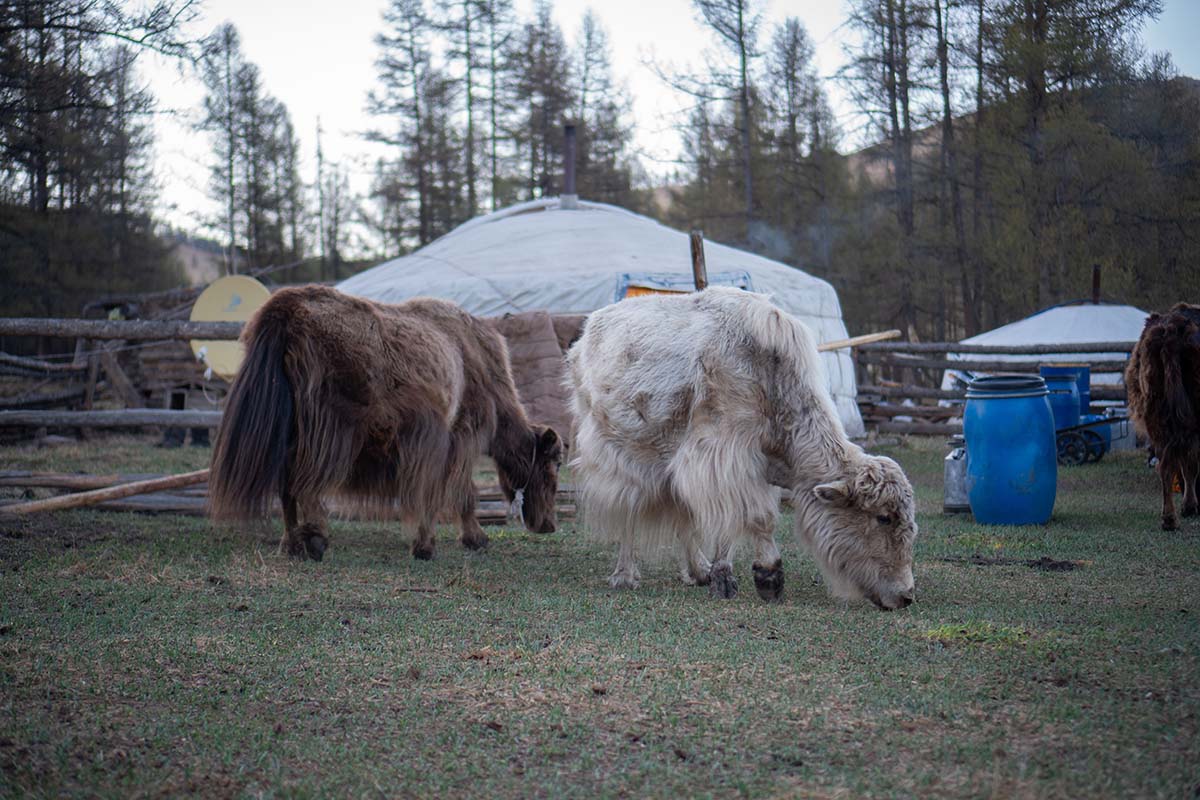
Colors
Yak wool comes in three natural colors: light milk chocolate, dark chocolate, and the rare platinum grey. From year to year and batch to batch, these colors will change slightly as they are really just a blend of the shades closest to the target color. For example, if you have a yak that is white, its wool will end up in the platinum grey group. If a yak is somewhere in-between the browns, well, it could end up with either color. Surprisingly though, the colors look very uniform, although you can see a bit more mélange in the grey.
Yak wool is generally sold only in its natural colors due to difficulties in dyeing compared to other fibers like cashmere and sheep’s wool. Don’t hold me to this, but from what I have been told, the few guard hairs that might still be found with the wool do not take dye well and can show more in a final product, whereas the few guard hairs that might be found in cashmere will still dye easily. All that being said, I’m still going to play around with dyeing some different colors this season.
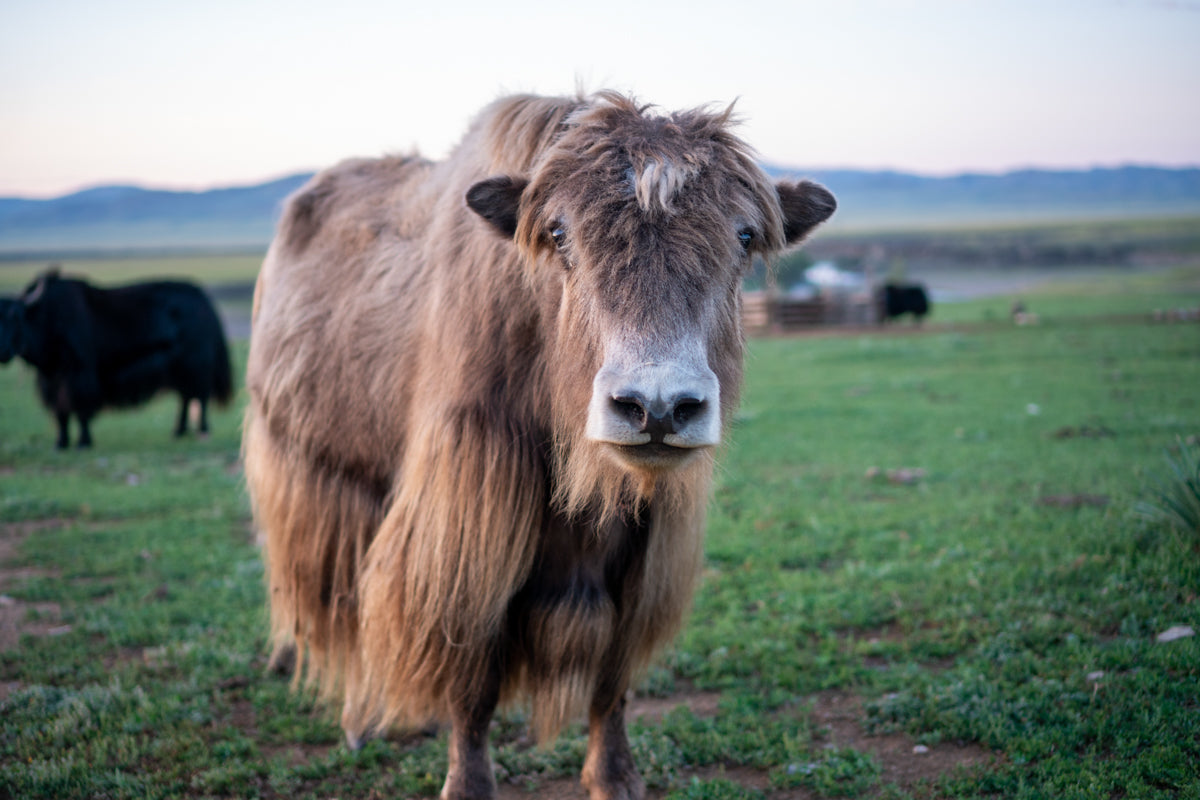
What is it?
Although guard hairs are always separated out of the down wool we use, some will always remain, as is the case with cashmere. When looking at a yak, you can see the wispy fiber under their chins, bellies, and tails — this is where a lot of the yak down fiber comes from. After the long, brutally cold winters in Mongolia, they start shedding their super warm downy fibers in the spring.
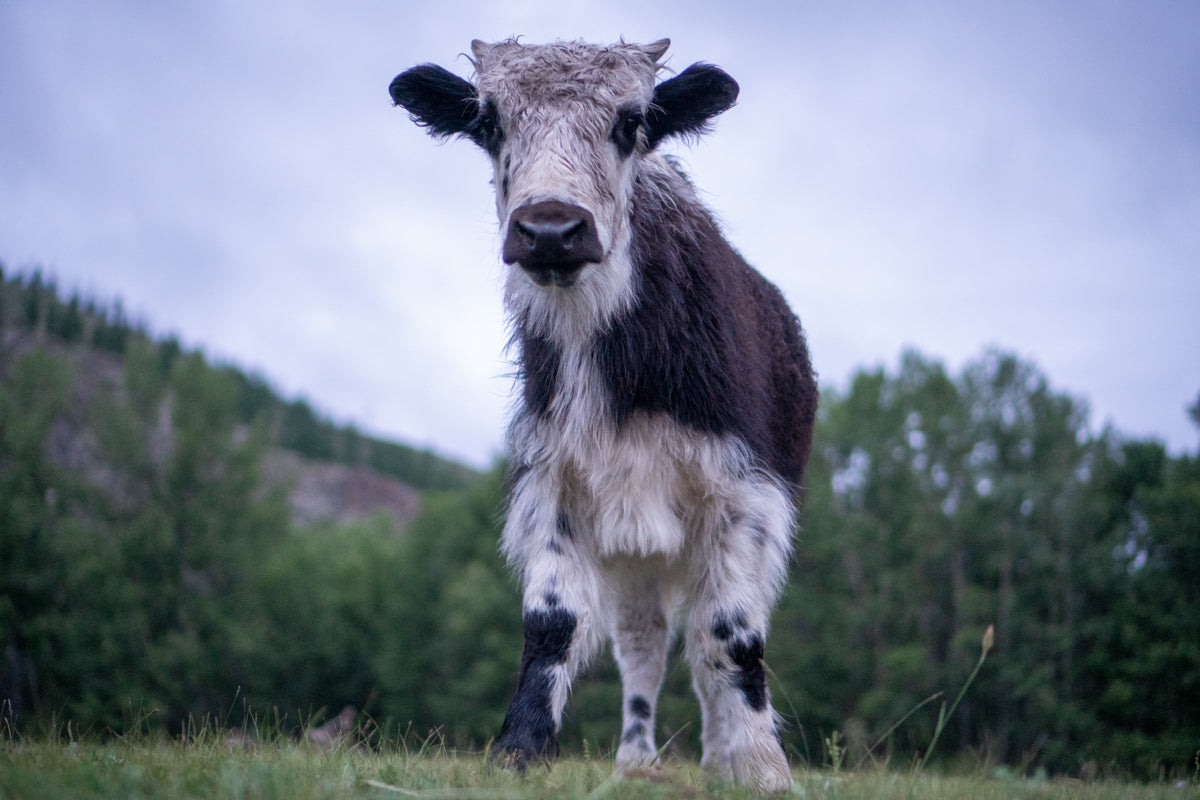
What is it used for?
Before the increase in demand for yak down, it wasn’t harvested or used to create extra income for herders. Nowadays, with the rise in popularity, herders brush their yaks to procure as much of the down fiber as possible to create luxury goods from knitting and crocheting yarn, accessories, and high fashion items. After brushing, the fiber is hand sorted for color and quality.
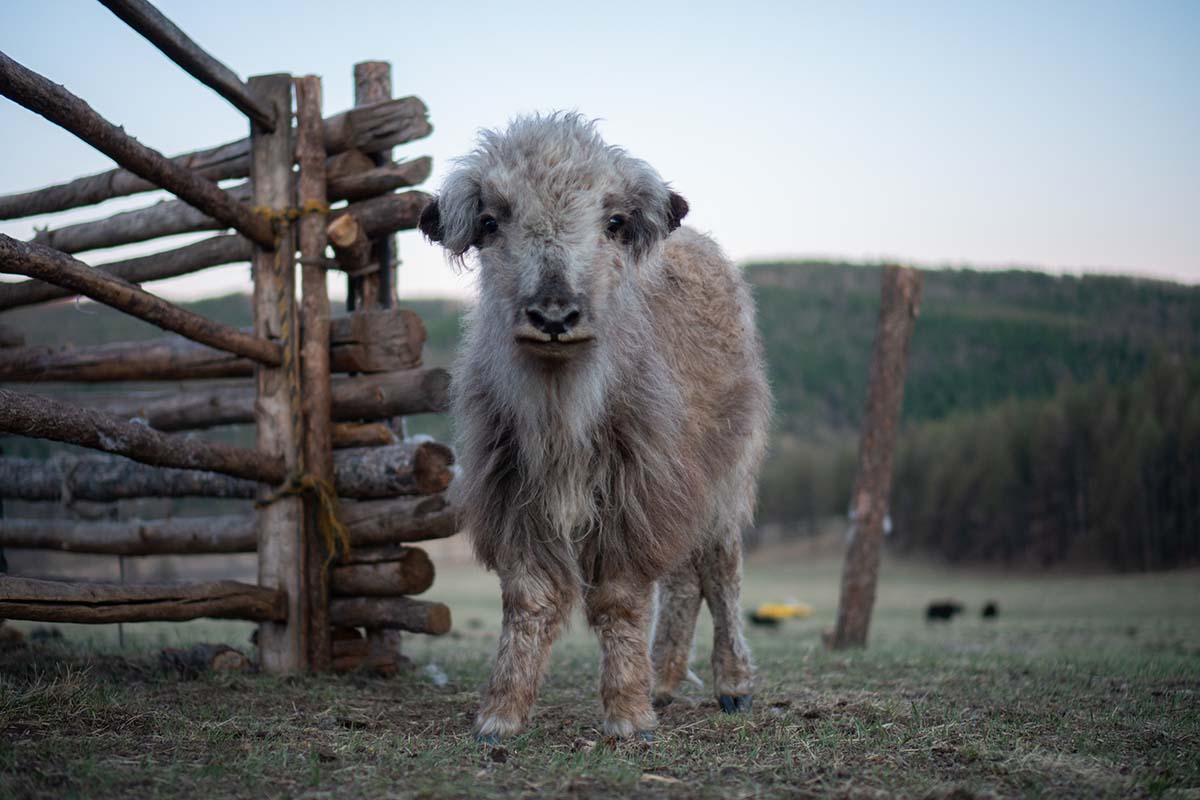
Why Baby Yak Wool?
Something that I wasn’t aware of until recently is that most any yak wool used in fashion is actually going to be procured from baby yaks, or yaks between one and two years old. These younger babes have a higher percentage of down fibers that are also finer and softer than their mature friends. All things being equal, younger animals generally have softer and therefore more sought after fiber. Fiber from older animals might find use in felted goods or other items that don’t require that exceptional soft hand that people expect from yak wool.
Does it hurt the yaks?
There are a lot of issues and concern about animal safety and welfare, and for good reason. I love animals and not using a supply chain that contributes to harming animals is very important for me. When talking about their behavior, I often compare the free-range animals here to semi-feral cats. They are familiar with humans, but bug out a little bit when they get too close. They might squirm some when getting a good brushing, but it’s not harming them and they will also be better off when all the loose fiber gets removed. With excess down wool in the summer, they might overheat, have issues with bug infestations, or have to spend a bunch of time rubbing it off against trees and branches anyways when they get itchy.
Images and videos of the animals being brushed can be a little disturbing even for me as it looks like the animal is uncomfortable, but I don’t believe that it is a traumatic experience. Yaks (and goats and camels) are generally restrained with a rope when brushed, but when done properly it won’t cause pain. Again, I compare it to something like brushing a semi-feral cat or washing your dog that doesn’t like baths.
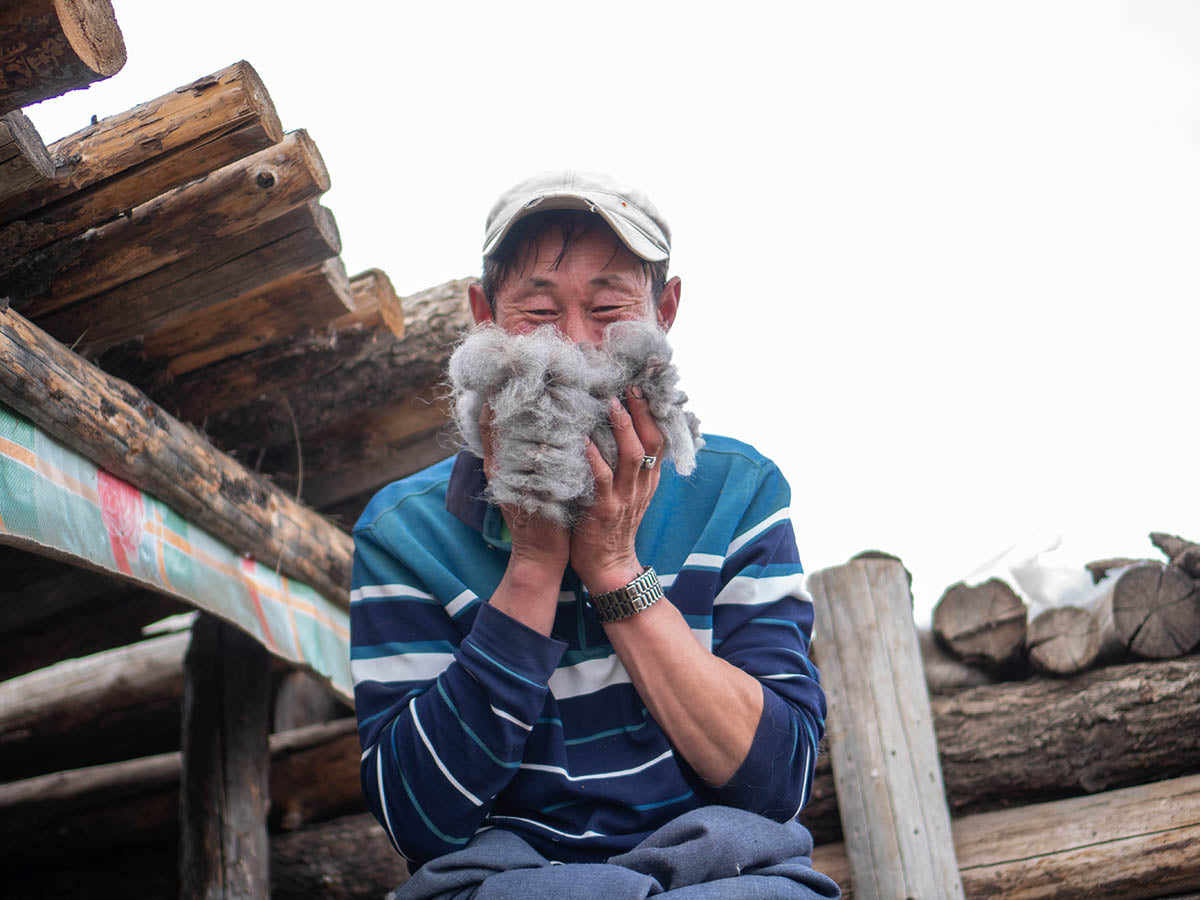
Why is it special?
Yak wool is a lovely long fiber that’s usually in the 18 micron range in diameter, meaning it’s still very soft but also quite durable. Although you give up a bit of softness compared to cashmere, all things being equal, it will hold up better in the long run. Like most natural wools, yak wool is known for its antimicrobial properties and is also valued for its moisture wicking and good temperature regulation. It’s unique combination of these characteristics has led to its usage in some high-end performance gear, like from Kora.
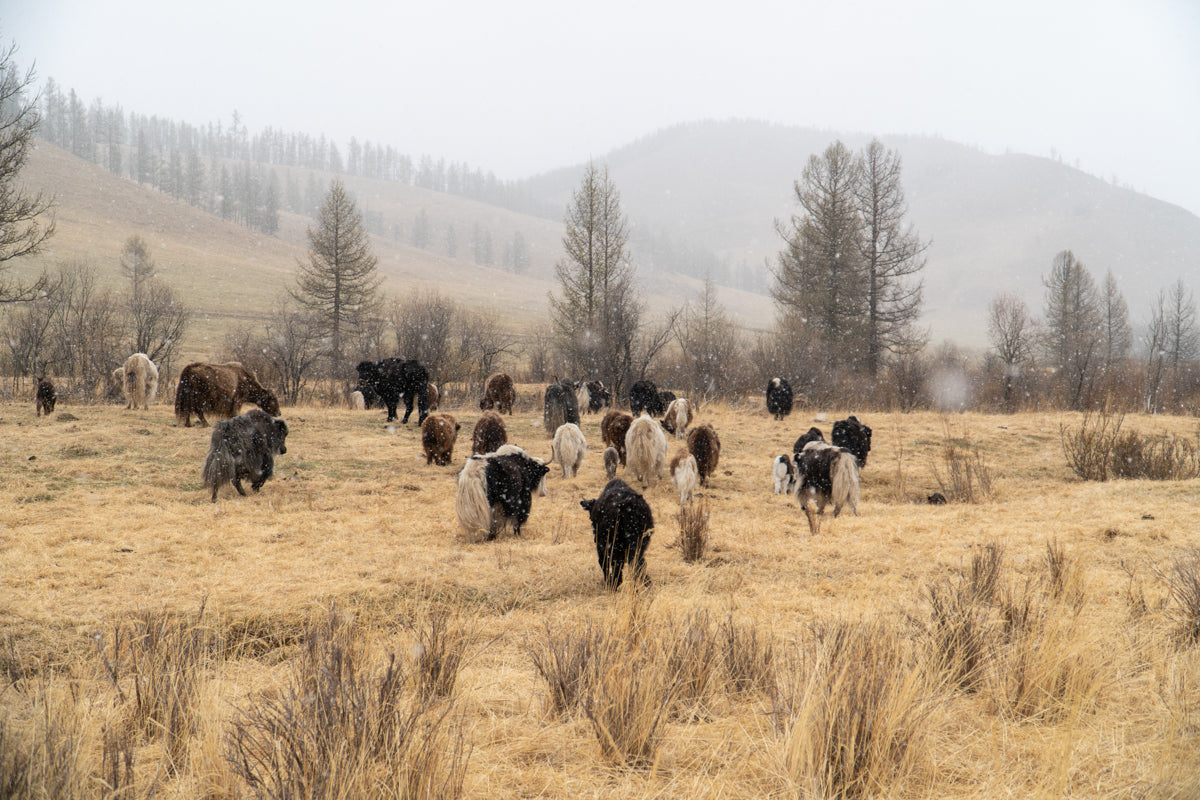
Would I get along with a Mongolian yak?
As for what yaks are like, they are pretty mild-mannered and tend to focus on their grass. Out of all the animals here, they prefer the coldest climates in mountainous areas. They aren’t too skittish, but I probably have more issues getting closer to yaks for pictures than I do for goats. Camels are maybe the most likely to stand their ground and let you get close out of them all. The only time I’ve ever gotten charged was by some of the stud yak bulls that I saw at a yak festival a few years back. (Yes, they have a yak festival every summer in Mongolia, and it is one more reason you should come visit.)
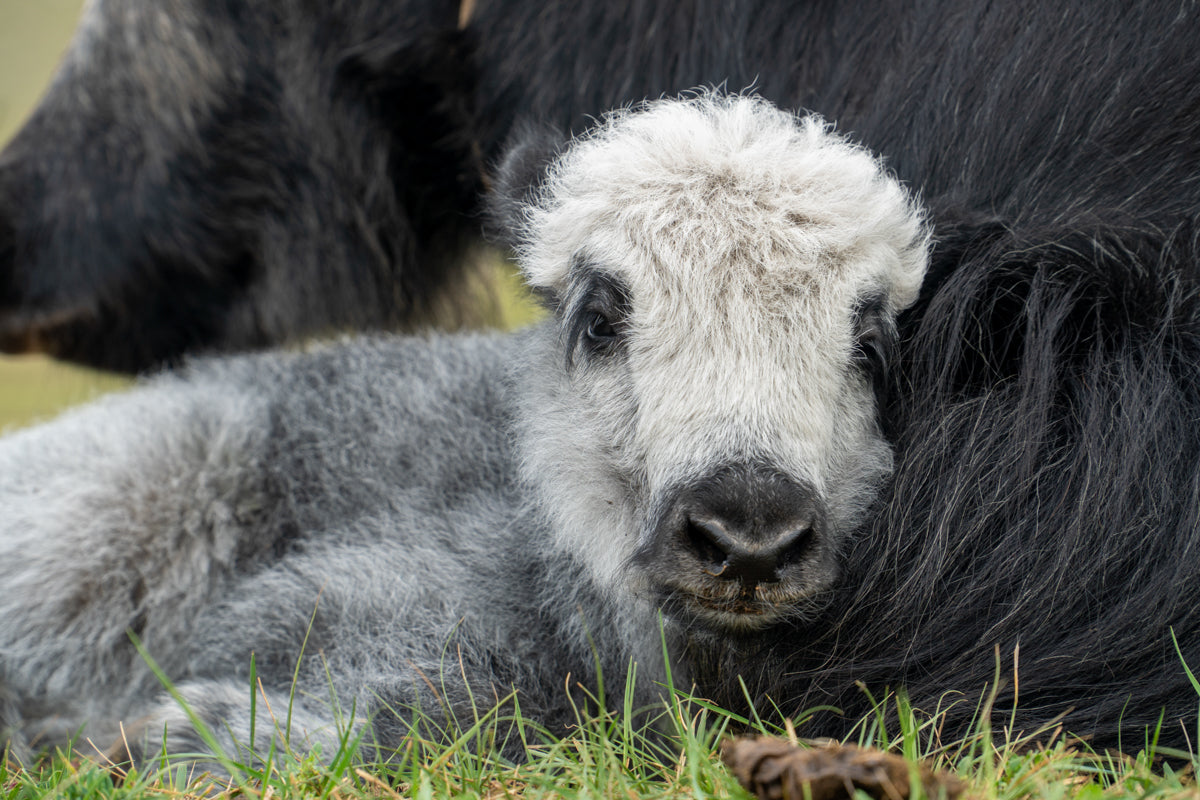
I heard yak mozzarella is a thing?
Yaks also produce very high fat content milk which is sought after for cheese making. Although still in its infancy, there is a developing cheese industry in Mongolia utilizing yak milk for many of its products. And if you’ve ever wondered what a yak sounds like:
A lot of snorting and grunting. They don’t make too much of a ruckus, but seemed to be a bit more vocal around the ranch and during milking time in the morning. Like all the animals here, they head out at first light to find grass in the two or three square kilometers around the herder’s ranch and come home every evening. The herders generally have a number of spots that they rotate and move to throughout the year to let the land replenish.
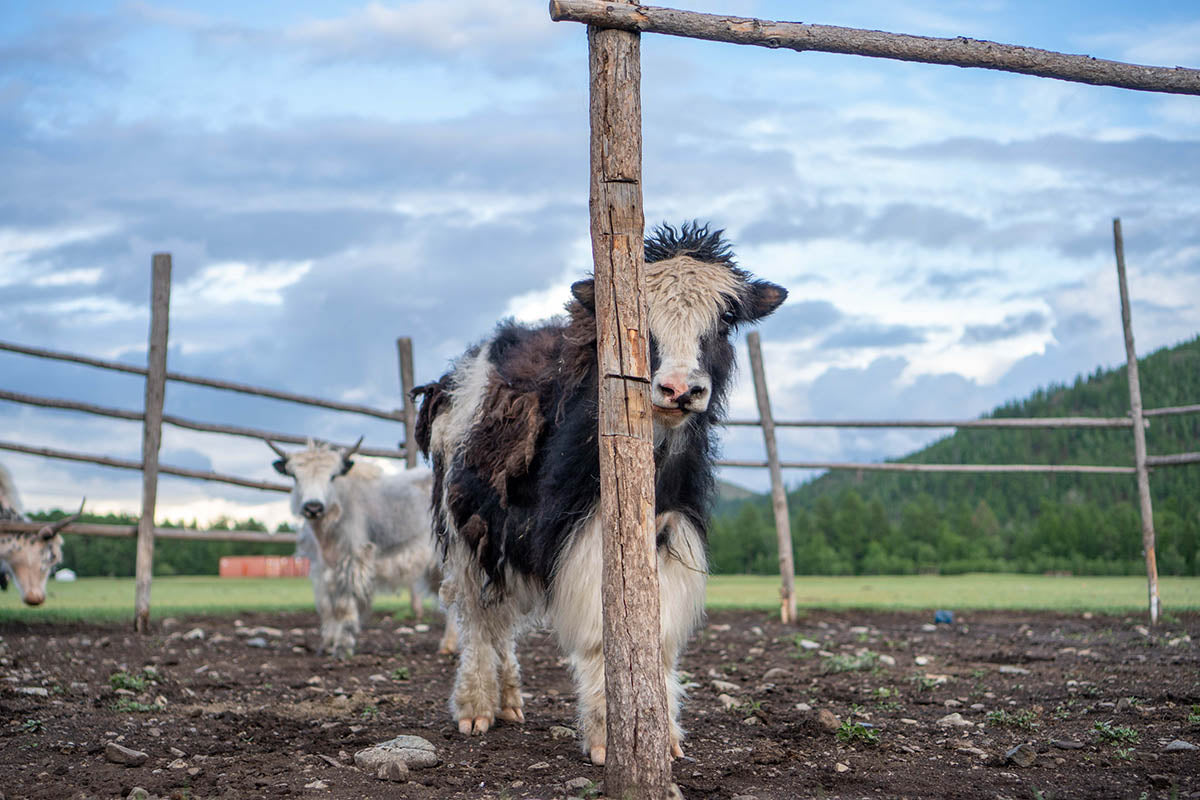
Is yak wool more ecofriendly than cashmere?
A lot of people claim yak wool is sustainable or more eco-friendly than cashmere, but I think it is hard to say. There is no official sustainable fiber certification here in Mongolia yet, so I can’t say one way or the other. ‘Sustainable’ numbers one year might not be the next if there is a drought or other issues, just to illustrate one of the many problems with defining the word in a land without fences.
Sustainability in Mongolia is a particularly complicated issue as it’s hard to organize and measure due to its openness and herders being nomadic. The main issues here will always be animal numbers, and an area that has too many yaks will overgraze an area just as much as an area that has too many goats. All the animals here tend to prefer different types of plants, so having a proper mix of sheep, goats, horses, cows, yaks, and camels can lead to land being more productive, but that alone cannot fix some of the current issues here with sustainability. That’s its whole own can of worms, so I’d love to write another visual article about sustainable fibers in Mongolia and how I’m trying to involve myself in the process. Although I can’t promise sustainable fiber yet (nor can anybody) I can promise I’m doing my best by working with herding cooperatives that are pioneering sustainable practices and pushing for a certification.
How should I wash it?
That’s about all I can think of for yak wool! You should care for yak wool the same way you’d care for any other wool or cashmere item. Cool water and a mild soap is the name of the game. Don’t ring it out, and lay flat to dry, reshaping if needed.
If your interested in purchasing some yak wool items, you can find both yarn and some ready-to-wear hand-loomed accessories on our site. Feel free to holler at me with any other questions about yak wool, Mongolia, or the fibers we work with here.